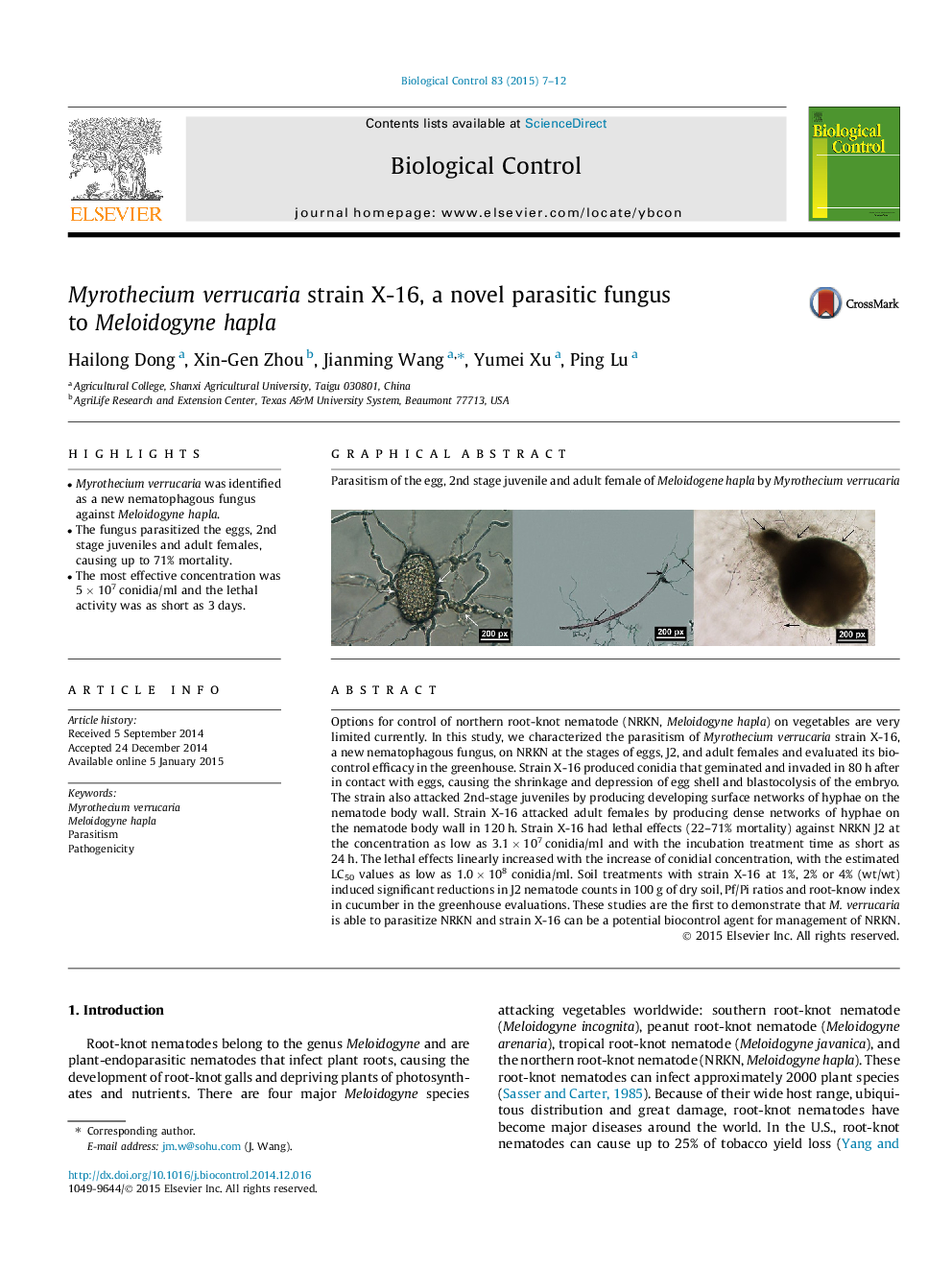| Article ID | Journal | Published Year | Pages | File Type |
|---|---|---|---|---|
| 4503766 | Biological Control | 2015 | 6 Pages |
•Myrothecium verrucaria was identified as a new nematophagous fungus against Meloidogyne hapla.•The fungus parasitized the eggs, 2nd stage juveniles and adult females, causing up to 71% mortality.•The most effective concentration was 5 × 107 conidia/ml and the lethal activity was as short as 3 days.
Options for control of northern root-knot nematode (NRKN, Meloidogyne hapla) on vegetables are very limited currently. In this study, we characterized the parasitism of Myrothecium verrucaria strain X-16, a new nematophagous fungus, on NRKN at the stages of eggs, J2, and adult females and evaluated its biocontrol efficacy in the greenhouse. Strain X-16 produced conidia that geminated and invaded in 80 h after in contact with eggs, causing the shrinkage and depression of egg shell and blastocolysis of the embryo. The strain also attacked 2nd-stage juveniles by producing developing surface networks of hyphae on the nematode body wall. Strain X-16 attacked adult females by producing dense networks of hyphae on the nematode body wall in 120 h. Strain X-16 had lethal effects (22–71% mortality) against NRKN J2 at the concentration as low as 3.1 × 107 conidia/ml and with the incubation treatment time as short as 24 h. The lethal effects linearly increased with the increase of conidial concentration, with the estimated LC50 values as low as 1.0 × 108 conidia/ml. Soil treatments with strain X-16 at 1%, 2% or 4% (wt/wt) induced significant reductions in J2 nematode counts in 100 g of dry soil, Pf/Pi ratios and root-know index in cucumber in the greenhouse evaluations. These studies are the first to demonstrate that M. verrucaria is able to parasitize NRKN and strain X-16 can be a potential biocontrol agent for management of NRKN.
Graphical abstractParasitism of the egg, 2nd stage juvenile and adult female of Meloidogene hapla by Myrothecium verrucariaFigure optionsDownload full-size imageDownload as PowerPoint slide
